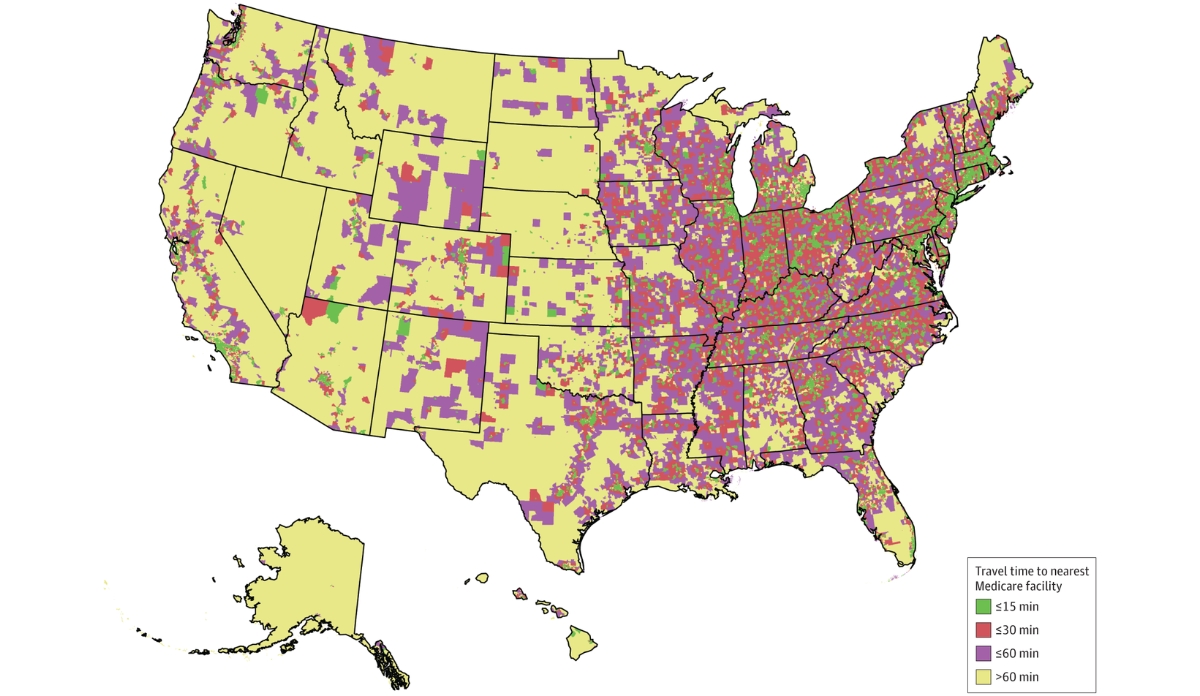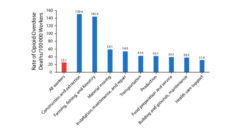The overdose crisis rages on. Last year over 110,000 overdose deaths were reported. Substance use treatment facilities have accepted more insurance plans in response to the epidemic over the past decade. However, many still do not accept Medicare due to significant coverage gaps, leaving millions without affordable and life-saving therapy.
Approximately 1.7 million Medicare beneficiaries have a substance use disorder (SUD), and only 11% seek treatment. Overdose rates are increasing among older adults, and the risk of substance use disorders is concerningly high among people with disabilities. About 15% of Medicare beneficiaries are enrollees with disabilities, who accounted for 81% of opioid overdose deaths among all beneficiaries between 2012 to 2016.
Jonathan H. Cantor and colleagues looked at payment methods accepted by roughly 12,000 licensed SUD treatment centers across the U.S. and how Medicare acceptance relates to travel convenience. The yellow areas, primarily in rural environments, mark the deserts where facilities do not accept Medicare. About 3.8 million Medicare enrollees live in non-metropolitan counties, and rural dwellers experience roughly the same rates of substance use as metropolitan areas. Distance to treatment facilities is a considerable problem for substance use recovery, regardless of age. Still, it may be felt more by older adults or people with impaired mobility due to transportation challenges.
But the doors to treatment are opening. The Consolidated Appropriations Act, 2023 included Medicare coverage expansion for behavioral health and substance use services, such as telehealth services for opioid use disorder and broader access to mental health counselors. This expanded access will support the growing number of Medicare beneficiaries and will be another step toward reducing the number of lives lost to overdose.
Databyte via Jonathan H. Cantor, et al. Patterns in Geographic Distribution of Substance Use Disorder Treatment Facilities in the U.S. and Accepted Forms of Payment From 2010 to 2021. JAMA Network Open, 2022.














